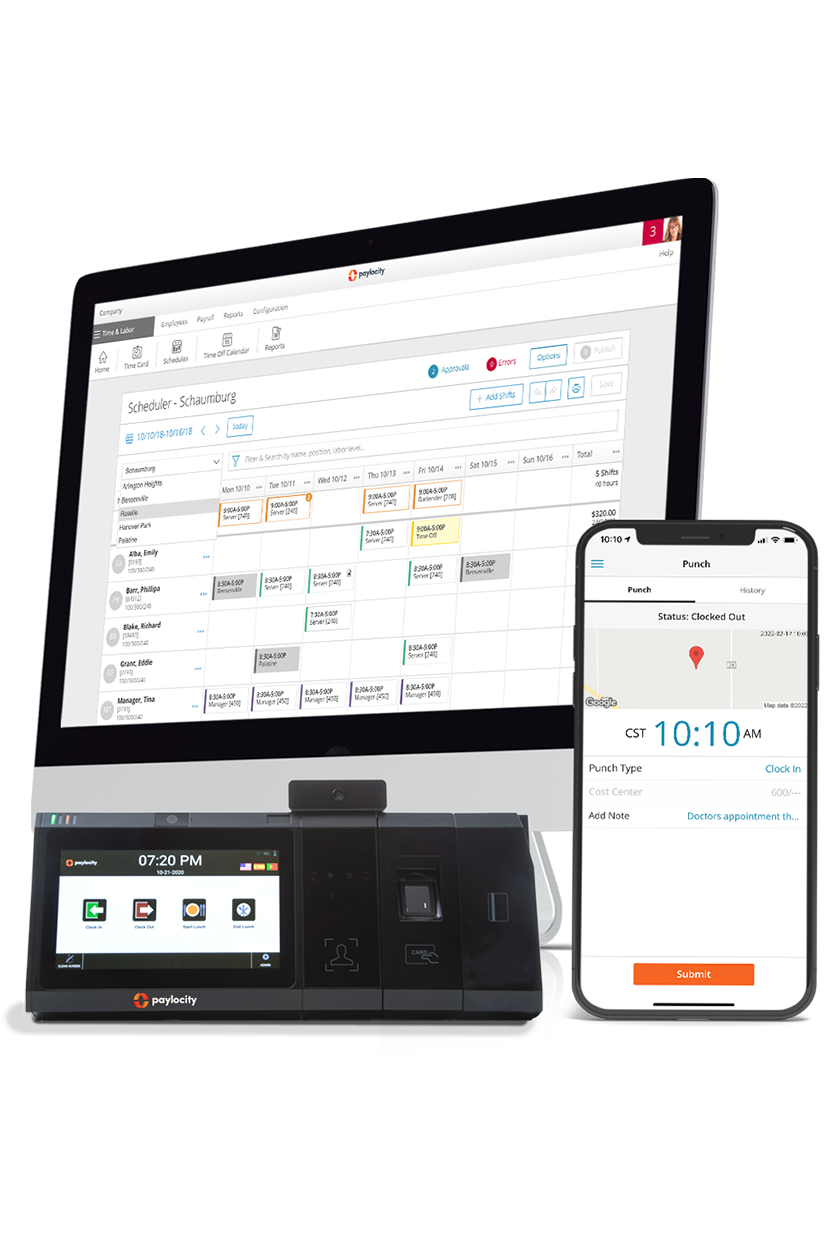resources
Strategic Workforce Planning: Laying the Groundwork
July 05, 2023
Strategic workforce planning is about defining your business’s workforce needs and identifying how these might change over time. Learn more in this article.
Blog Post

Workforce planning is a lot like building a house. And it's human resources' job to ensure the foundation is solid, fitting the right people into the right roles.
Too many skills gaps, a lack of performance measurement, and a shallow talent pool is like building the business on sand — it's destined to crumble.
To build this strong workforce foundation, businesses need to do more than simply respond to crises as they occur. When the tides of economic turmoil or the winds of excessive demand hit the business, that foundation needs to already be secure. HR needs a long-term approach. They need a strategic approach.
So, put on your safety helmet as we discuss why you should embrace strategic workforce planning and how to apply it at your organization. Watch your footing.
Key Takeaways
- Strategic workforce planning involves defining your current workforce needs and identifying how those needs may change over time. HR plays a crucial role in this process by identifying talent needs and skill gaps.
- Effective workforce planning can result in higher worker engagement and better retention, cost savings, and a more adaptive workforce.
- The strategic workforce planning process typically involves identifying business goals, conducting workforce and demand analysis, and identifying the gaps.
What is Strategic Workforce Planning?
Strategic workforce planning aims to define your current workforce needs and identify how they’ll likely change over time. It does that by organizing employees according to their performance, potential, and skills, and then weighing that information against your business goals and financial performance forecast.
A workforce planning strategy also takes market trends into account. HR specialists must be able to predict what roles, skills, or applicant types will be required to maintain long-term growth. Similar to pulling off a game-winning touchdown, you need to ensure the right people are in the right positions at the right time.
By building an effective strategy, your company will gain a competitive advantage by paving over workforce cracks as soon as they appear.
For example, let’s say it takes a craft brewery 12 months to fully train a production worker. Their data predicts they'll need five new brewers to meet demand in Q4 of 2024, so HR crafts a recruitment strategy that will have five trainees brought in by the final quarter of 2023.
Why is Workforce Planning Important?
Workforce planning is a foundational component of workforce management — it’s all about ensuring you have the right people with the right skills at the right time.
When you’re strategic about workforce planning you can reap benefits like:
- Better anticipation of future talent needs
- Optimized recruiting strategies to fit those projected needs
- Proactive addressing of skills gaps
- An agile workforce in a dynamic marketplace
- Improved employee engagement and retention
- Reduced costs from areas like labor, training, and misaligned skill sets
- An HR department aligned with the goals of the business
The Strategic Workforce Planning Process
Solutions to problems come in all shapes and sizes. It should be no surprise workforce planning strategies are as diverse as the departments or organizations that use them.
Here are several steps anyone can use to construct a solid strategic workforce plan.
1. Identify Business Goals
Before you can get anywhere with workforce planning, you must understand your business’ short-term and long-term goals. Identifying these objectives is imperative in aligning HR with the company's overall strategies.
This may include development and launching of new products, running down obsolete stock, growing organizational expansions, adding new logistics capabilities, or entering new markets.
Once you’ve clearly defined the goals of the business, you can build the foundations of your workforce planning strategy.
2. Workforce Analysis
Also known as supply analysis, workforce analysis is where you take a deeper look at your domain (i.e., the people that make up your organization.) You want to know who you have before you start looking for what you need.
The required quantity of team members for the business to operate is the first and most obvious metric to consider. Which departments are understaffed or overstaffed? How will those numbers be affected by future business projections?
Next, you’ll need to assess the quality of your workforce. In other words, you need a tool that combines quantitative and qualitative information to rate your employees. A simple but helpful option for this is a nine-box grid that allows you to segment team members into one of nine categories:
|
|
Low Performance |
Medium Performance |
High Performance |
|
High Potential |
Box 3 |
Box 2 |
Box 1 |
|
Medium Potential |
Box 6 |
Box 5 |
Box 4 |
|
Low Potential |
Box 9 |
Box 8 |
Box 7 |
Your people may need varying types of training or guidance depending on where they fit on the grid. For example, high-potential, low performers may benefit the most from coaching or mentoring, while low-potential high performers could need an online course.
Workforce analysis also includes an assessment of external factors. Outside influences affecting the failures and successes of your workforce may include competition, changing regulatory requirements, shifting worker attitudes, and changing market trends.
Finally, part of supply analysis includes auditing your workforce maintenance programs. For example, are your current onboarding, training, and development practices adequate?
You can learn more about this type of HR analysis through our strategic workforce planning webinar.
3. Demand Analysis
The next step involves workforce forecasting to ensure business continuity. Consider your business’ objectives alongside your current workforce and assess your situation against market evolution and workforce demographics.
Is the current market full of aging talent with legacy skill sets? Does new incoming talent have different expectations for working environments and benefits?
Part of demand analysis involves determining whether a proportion of your current workforce and/or acquired talent can be trained for future skills.
Financial analytics, like sales forecasting, can also help you project the desired number and composition of your workforce even if you’re looking several years down the line.
4. Identify Gaps
With a clearer picture of who and what you need, any problems should now be staring you in the face. Your current workforce may be more than enough to meet demand in certain departments — but other teams may already be struggling.
Any skill or talent gaps you discover are potential roadblocks to your business’ success, but don’t stress too much. Even if things seem dire, remember the first step to finding a solution is identifying the problem.
With the right analytics tools, leadership and your HR team can begin to understand likely future demand as well as existing shortfalls. This should take into account both growth in the market and workforce attrition.
5. Start Solving Problems
So, you’ve found a few gaps in your workforce that don’t align with your future business needs. Time to start filling potholes and reinforcing bridges in your HR practices.
While knocking down roadblocks should keep company growth on an accelerating trajectory, you’ll need the help of key stakeholders and decision-makers to develop creative solutions that maximize what you already have.
There are several options to fill any problematic gaps, including:
Recruitment
One way to ensure fresh ideas and up-to-date skills is to keep pulling in new talent with a recruitment strategy that also makes up for employee turnover.
Adjust your tactics to prioritize the most pressing gaps you’ve found in your workforce. By reallocating some HR resources, you’ll also prevent bottlenecks from forming in your business operations.
In-house Promotions and Training
When it comes to essential positions, like management and leadership, long-term absences can be costly.
Recruiting internally is always a viable solution, especially if these types of positions are under threat of being spread too thin. Retraining instead of hiring also saves time and money when maintaining an effective workforce.
For example, say one of your niche products is on its way to being discontinued. Convert sales, marketing, and other workforce assets from that dying product line to one of your growing brands. You’ll avoid a workforce gap and save on the cost of recruiting and training new hires.
Temporary and Part-Time Employees
Recruiting and hiring contingent workers can help you meet seasonal workforce demands or alleviate current staffing shortages while maintaining business continuity in the face of dynamic market demand.
While “temp” workers used to be viewed as low-skilled, HR teams can now find all levels of job applicants willing to work on temporary terms. These include executives, accountants, IT specialists, marketers, and—you guessed it—human resources experts!
Part-time employment is another option for addressing short-term or murky workforce demand forecasts. This type of recruitment allows you to tap into a rich vein of talent that chooses to work fewer hours. You may discover rock stars who are parents with young children, students, or semi-retired experts.
Contractors
Freelancers and consultants can also fit your workforce needs in plenty of situations. They can be brought in for projects like re-brands, mobile app development, or adding new infrastructure to a business.
Of course, they can create some extra work for you, and you’ll need to comply with regulations like the Fair Labor Standards Act (FLSA). Plus, misclassification of contract workers can be costly (and a PR nightmare to boot).
Read More: Guide to Employee Classifications for Employers
6. Follow Through and Optimize
After you have a workforce planning strategy in place, it’s time to put thought into action. Remember, as things progress, forecasts may change. That’s OK — workforce planning is fluid. Now that you have a strategic plan, you can glean insights and adjust as needed.
If new issues arise, you have several potential workforce channels from which to fill a gap. If none of your established methods work, it’s time to make a new plan!
Strategic Workforce Planning Best Practices
Strategic workforce planning is flexible and can work for all types of businesses. However, HR experts can follow these best practices when it comes to devising a strategy.
Involve Key Stakeholders
You already know how hard it is to implement improvements without getting everyone on board.
The easiest way to steer things in the right direction is to focus on stakeholders throughout your organization. Educate and collaborate with executives, department heads, your HR team, and the rest of your workforce. You may even discover better ideas for data collection and analysis or filling in workforce and skills gaps.
Keep an Eye on The Future
Strategic workforce planning is mainly centered on supply and demand. While this is a daunting task on its own, you’ll benefit from avoiding tunnel vision.
As part of your recruitment strategy, keep a finger on the pulse of the job market. Always consider market and technological trends, global disruption, and other external factors.
With an eye on what’s changing, you’ll be better prepared to optimize your workforce planning tools and turn potential disasters into growth opportunities.
Making Use of Workforce Planning Solutions
Strategic workforce planning requires a healthy foundation of knowledge and the right tools.
Opt for HR & payroll software like Paylocity, which gives you all the necessary tools to do the job properly. A single source of truth for all essential workforce planning tasks and data — from time-tracking, scheduling, budgeting, recruiting, forecasting, and more.
Workforce management software breaks down silos and eliminates redundancies. Wouldn’t your life be easier if you could minimize the time spent on all those mundane administrative tasks?
Even better, providers like Paylocity can save departments from unnecessarily wasting resources and reduce compliance risks to boot.
Request a demo today to learn more about Paylocity can equip you to be a strategic workforce planner.

More Time, Less Labor = A Better Experience
Save time by eliminating administrative tasks! Empower your employees to manage their time with consumer-friendly tools. Employees can view current and future balances, request time off, and be notified of important alerts in real-time. Supervisors can dig into 100+ standard reports to track it all and submit approvals with a click of a button - all while collecting valuable insights into time and attendance!


